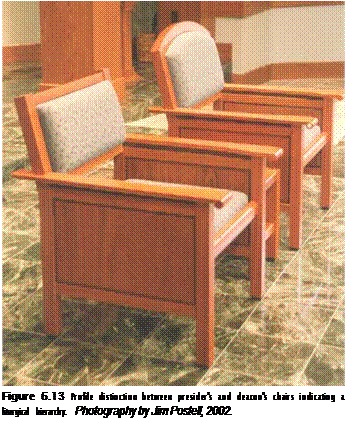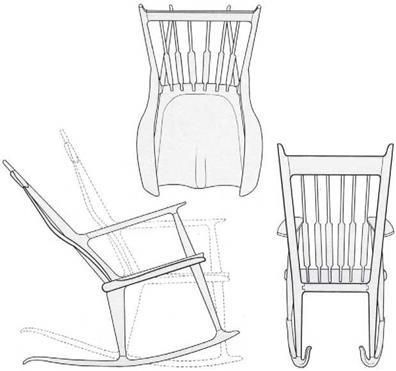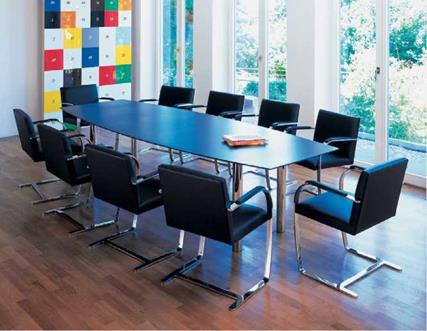The handcrafted wood rockers designed and crafted by Sam Maloof express movement in both a visual and visceral manner (Figure 6.11). The visual and tactile characteristics contribute to their dynamism. Furniture that appears static, such as Erik Skoven’s Block stool (see Chapter 4), expresses stasis (the characteristic of being at rest). Dynamism and stasis are contrasting attributes in built form.
Hierarchy and Emphasis
Hierarchy and emphasis point to priority and relative value in design. Hierarchy and emphasis are achieved through the manipulation of location, color, size, texture, and shape. Form,
|
Figure 6.11 Visual and visceral movement—Maloof rocker, designed and fabricated in walnut and ebony by Sam Maloof (1983). Drawing by SAID student and Jim Postell, School of Architecture and Interior Design, University of Cincinnati. |
|
Figure 6.12 Florence Knoll conference table (1961) with flat bar and Brno chairs expressing a formal and social hierarchy. Photography courtesy of Knoll, Inc. |
color, and material can emphasize primary, secondary, and tertiary levels of importance and meaning. Formal hierarchy can reinforce social status, such as the person sitting at the short end of a long rectangular conference table (Figure 6.12) or the profile distinctions suggesting a social hierarchy between a deacon’s chair and a presider’s chair in the Catholic church
(Figure 6.13). In this sense, social, cultural, and political meaning parallel formal characteristics of hierarchy.
 Emphasis is drawn from dominant and subordinate relationships. For example, one can emphasize the vertical elements of a shelving system by using distinct materials and details to draw the eye. Shape differences and contrast levels can help designers distinguish dominant and subordinate relationships in their work.
Emphasis is drawn from dominant and subordinate relationships. For example, one can emphasize the vertical elements of a shelving system by using distinct materials and details to draw the eye. Shape differences and contrast levels can help designers distinguish dominant and subordinate relationships in their work.





